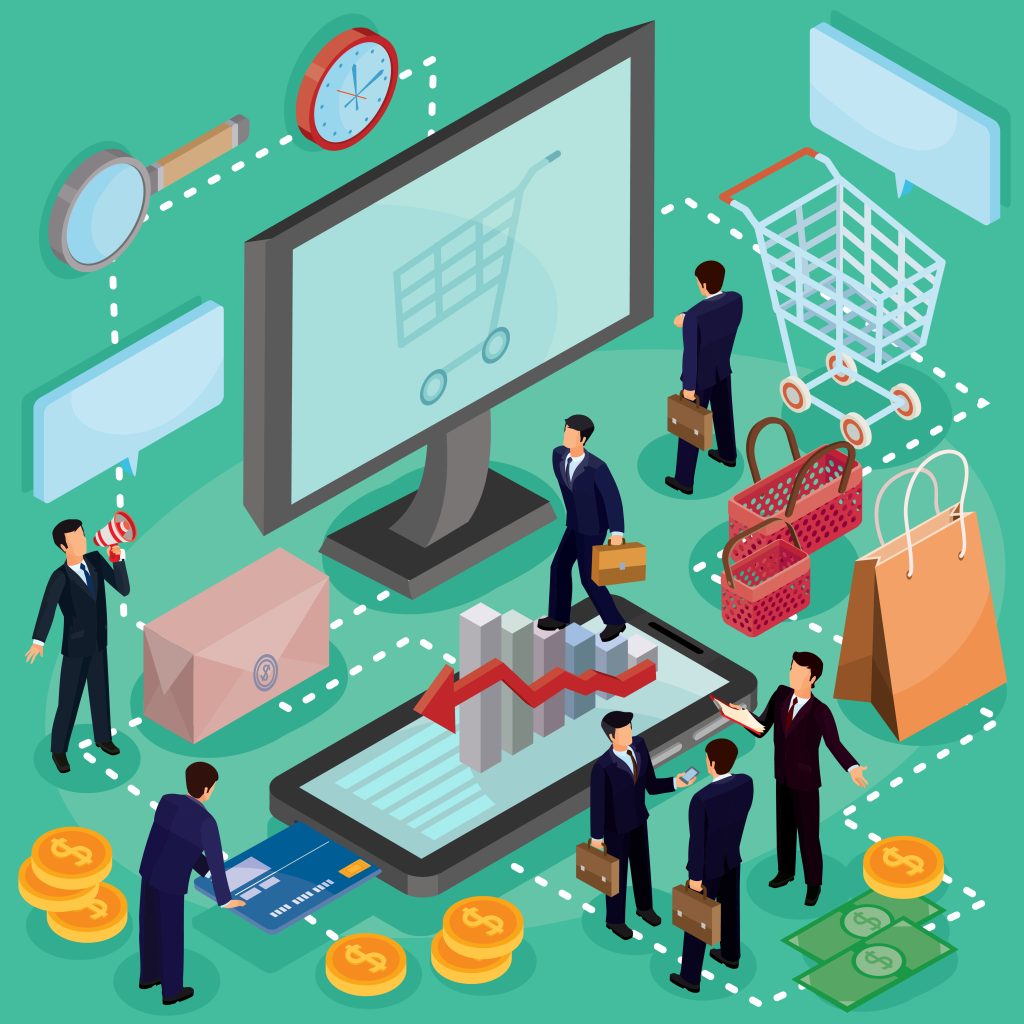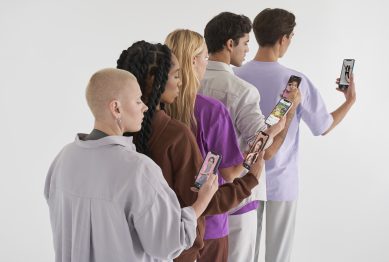The way people shop has transformed dramatically over the last decade, and 2025 marks a turning point in how businesses approach online retail. The future of e-commerce and consumer behavior is being shaped by artificial intelligence, sustainability demands, immersive digital experiences, and a growing desire for convenience and personalization. Consumers no longer expect e-commerce to simply be a digital version of physical retail—they expect it to be smarter, faster, and tailored to their individual needs.
According to Statista, global e-commerce sales are projected to reach 8.1 trillion by 2026, nearly double what they were in 2021. Meanwhile, a 2024 McKinsey report highlights that 71% of consumers expect personalized interactions from brands, and 76% are more likely to consider a purchase when personalization is offered. This shift illustrates that e-commerce is no longer just about transactions; it is about building ongoing relationships with consumers in a rapidly changing environment.

Why Consumer Behavior Is Evolving in 2025
Several factors are accelerating changes in consumer behavior. Technology has made shopping accessible anywhere, anytime, while social media has blurred the line between content and commerce. At the same time, climate change awareness and rising living costs have made people more selective about where and how they spend. As a result, businesses are under pressure to innovate while staying authentic and sustainable.
Key Trends Defining the Future of E-Commerce and Consumer Behavior
1. AI-Powered Personalization at Scale
Artificial intelligence is redefining personalization. In 2025, recommendation engines are more advanced than ever, predicting not only what consumers want to buy but when they are most likely to purchase.
Practical applications include:
- AI-driven product recommendations that adapt in real time to browsing behavior.
- Personalized pricing and discounts based on customer history and loyalty.
- AI chatbots that deliver human-like customer service 24/7.
For businesses, this means creating seamless, customized shopping journeys that improve conversion rates. For consumers, it means less time searching and more time enjoying a personalized experience. According to PwC, companies using advanced personalization strategies are seeing revenue increases of up to 15%.
2. The Rise of Social Commerce
Social media platforms have become more than discovery tools—they are now direct sales channels. In 2025, TikTok Shop, Instagram Shopping, and YouTube integrations are redefining how consumers purchase products.
- Influencers and creators act as trusted salespeople for niche communities.
- Short-form video content drives impulse purchases.
- Integrated checkout features reduce friction, allowing users to buy without leaving the app.
This is particularly powerful with Gen Z and Gen Alpha, who spend more time on social platforms than on traditional e-commerce websites. Businesses that fail to adapt risk losing visibility to competitors who thrive in these new digital marketplaces.
3. Sustainability as a Purchase Driver
Sustainability is no longer optional—it is a requirement. Consumers are increasingly factoring environmental and ethical considerations into purchasing decisions.
Examples include:
- Shoppers choosing brands with carbon-neutral shipping.
- Growth of resale marketplaces like ThredUp and Depop.
- Demand for transparent supply chains showing sourcing and labor practices.
A 2024 Deloitte survey found that 60% of global consumers would stop buying from companies that fail to act on climate issues. This means businesses must go beyond marketing claims and embed sustainability into operations to remain competitive in the future of e-commerce and consumer behavior.
4. Immersive Shopping Experiences with AR and VR
Augmented reality (AR) and virtual reality (VR) are changing how people evaluate products online. By 2025, furniture, beauty, and fashion retailers are leading the way in immersive shopping.
- AR tools allow shoppers to visualize how furniture fits in their home.
- Virtual try-on technology lets customers see how clothing or makeup looks before purchase.
- VR stores offer gamified experiences that mimic real-world browsing.
According to Gartner, by 2026, 25% of consumers will spend at least one hour a day in immersive digital environments for work, shopping, and entertainment. This signals that retailers investing in AR/VR will not just enhance customer experience but also reduce returns and increase trust in online shopping.
5. Faster, Smarter Logistics
The future of e-commerce and consumer behavior is heavily shaped by delivery expectations. Consumers now expect near-instant gratification, with same-day or even one-hour delivery becoming more common in urban areas.
Innovations include:
- Drone and autonomous vehicle deliveries in pilot programs.
- Micro-fulfillment centers in cities to reduce delivery times.
- Predictive shipping, where items are sent before the customer even completes checkout, based on data models.
Amazon and Walmart are already investing heavily in these technologies, setting a new standard that smaller retailers must work hard to match.
6. Subscription and Membership Models
Subscriptions are expanding beyond streaming services into categories like groceries, fashion, and home goods. Consumers are drawn to the convenience, cost savings, and exclusivity these models provide.
Examples include:
- Meal-kit subscriptions offering healthier, time-saving options.
- Clothing rental services providing fresh wardrobes without long-term ownership.
- Membership programs offering free shipping, early access, or exclusive products.
McKinsey research shows that subscription e-commerce has grown more than 100% annually over the past five years, and the trend shows no sign of slowing down in 2025.
7. The Shift Toward Mobile-First Shopping
Mobile commerce (m-commerce) is no longer a secondary channel. With smartphones at the center of digital life, more than 70% of e-commerce sales are projected to come from mobile devices in 2025.
Businesses are optimizing apps and websites for speed, intuitive navigation, and one-click checkout. Consumers, in turn, expect mobile-first experiences that are just as reliable as desktop browsing.
8. The Influence of Generative AI in Content and Commerce
Generative AI tools are now being used by both consumers and retailers. From AI-generated product descriptions to hyper-realistic ad creatives, this trend is transforming marketing and customer engagement.
For shoppers, AI is making it easier to compare products, read auto-generated reviews, and even design personalized products. For businesses, it lowers content production costs while maintaining relevance and speed to market.
Practical Strategies for Businesses
To adapt to the future of e-commerce and consumer behavior, businesses can focus on these practical steps:
- Invest in AI tools that personalize experiences at every customer touchpoint.
- Embrace social commerce by partnering with creators and optimizing for platform-specific sales features.
- Prioritize sustainability with measurable and transparent commitments that resonate with consumer values.
- Explore AR and VR as ways to enhance trust and reduce product returns.
- Upgrade logistics capabilities to meet the growing demand for fast, reliable delivery.
- Offer flexible subscriptions that align with consumer demand for convenience and cost savings.
- Optimize for mobile-first experiences with responsive design and frictionless checkout.
- Leverage generative AI to create engaging, scalable marketing content.
Challenges Ahead
Despite the opportunities, businesses face challenges. Increased reliance on data raises privacy concerns, and consumers are becoming more cautious about how their information is used. At the same time, the costs of implementing advanced technologies may be out of reach for smaller businesses. Additionally, balancing sustainability with affordability remains a hurdle in an era where inflation impacts spending.
Looking Ahead
The future of e-commerce and consumer behavior in 2025 and beyond will be defined by technology, sustainability, and personalization. Businesses that succeed will be those that can seamlessly integrate these elements into a customer journey that feels both efficient and authentic.
For consumers, shopping will continue to be shaped by convenience, values, and immersive digital experiences. What was once futuristic—AI shopping assistants, drone deliveries, and AR product previews—is quickly becoming the norm. The e-commerce landscape of tomorrow is not just about selling products but about creating ongoing relationships built on trust, innovation, and shared values.
References
- We could be spending an hour a day in the metaverse by 2026. But what will we be doing there, https://www.weforum.org
- 10 Best Strategies to Manage Remote Workers in 2025, https://blog.tmetric.com
- Remote Work Statistics 2025: https://pumble.com









